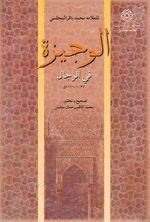Al-Wajiza fi l-rijal (book)
 Bibliographical Information | |
| Author | Muhammad Baqir al-Majlisi |
|---|---|
| Original title | اَلوَجیزة فی الرّجال |
| Language | Arabic |
| Subject | Rijal |
| Published | 1420/1999-2000 |
| Publisher | Publications of the Ministry of Islamic Culture |
Al-Wajīza fī l-rijāl (Arabic: الوَجیزة فی الرِجال, lit. a concise work on rijal) is an Arabic book concerning rijal written by Muhammad Baqir al-Majlisi. This short essay concerns the biographies of figures and transmitters of hadiths.
The Author
The author of this book is al-'Allama al-Majlisi or the Second Majlisi (b. 1037/1627-8 d. 1110/1699). He is one of the best-known scholars, jurist and muhaddiths in the Islamic world. He was an influential Shiite official in the Safavid era, and the author of the book of hadiths, Bihar al-anwar.
Contents and Style of Writing
After a short introduction, the author concerns himself with mentioning the names, titles, and kunyas of the transmitters of hadiths in an alphabetic order. He specifies their reliability or unreliability with abbreviations, such as "ثقة" (thiqa, literally: reliable) which refers to being Imami, righteous, and careful; "ح" ('ḥ') which refers to being praised, "صح" ('ṣ.ḥ.') which refers to being accurate; "ض" ('ḍ') which refers to being unreliable, and "م" ('m') which refers to being unknown.[1]
In this essay, the author believes that the masters of permission are reliable. "Masters of permission" (mashayikh al-ijaza) refers to people who issue permissions for the transmission of their or other people's hadiths and books to others. The first person who implied the belief in this thesis was al-Shahid al-Thani (d. 965/1558), though the terminology was first used by Muhammad Taqi al-Majlisi (d. 1070/1660) in his book, Rawdat al-muttaqin. Another principle maintained by the author is his reliance on certifications by al-'Allama al-Hilli and other recent scholars such as al-Shahid al-Thani to the effect that a transmitter of hadiths was reliable. Another evidence for reliability of a transmitter of hadiths to which the author appealed was the transmitter's being in a chain of transmission which is believed to be accurate by prominent scholars of hadiths.[2]
Sources
In writing the essay, al-'Allama al-Majlisi relied on previous sources such as:
- Rijal al-Najashi
- Rijal al-Tusi
- Al-Fihrist by al-Shaykh al-Tusi
- Ikhtiyar ma'rifat al-rijal by Muhammad b. 'Umar al-Kashshi
- Rijal Ibn Dawud by Al-Hasan b. Dawud al-Hilli
- Khulasat al-aqwal by Al-'Allama al-Hilli
- Rabi' al-Shi'a which seems be written by Fadl b. Hasan al-Tabrisi
- Al-Ri'aya fi 'ilm al-diraya by al-Shahid al-Thani
- Al-Irshad by al-Shaykh al-Mufid
- Al-Du'afa' by Ibn al-Ghada'iri
In order to evaluate the reliability of some transmitters of hadiths, al-Majlisi also consulted and employed the Four Books.[3]
Manuscripts
Although the book is very short, it has been the focus of much attention since it was written. Over 120 manuscripts of the book are available in libraries. Here are some old manuscripts of the book:
- The manuscript in the Library of Ayatollah Mar'ashi Najafi which was hand-written during the time of the author.
- A manuscript in the same library hand-written by Muhammad Radi in Jumada I 1104 (January 1693).
- A manuscript in the Library of the Iranian Majlis hand-written by Ibrahim b. Hashim al-Husayni al-'Amidi in 1079/1668-9.
- A manuscript in the Library of Tehran University hand-written by 'Ali b. Yahya in the 11th/17th century.[4]
Publication
The book was published by the Publications of the Islamic Culture and Guidance Ministry in Tehran as edited by Muhammad Kazim Rahman Sitayish.
Notes
References
- al-Wajīzah fī al-Rijāl, Kitāb Māh Dīn, Murdād 1379 SH, Shumārāh 34.
- Majlisī, Muḥammad Bāqir al-. Al-Wajīza fī ʿilm al-rijāl. Tehran: Wizārat-i Farhang wa Irshād-i Islāmī, 1420 AH.
